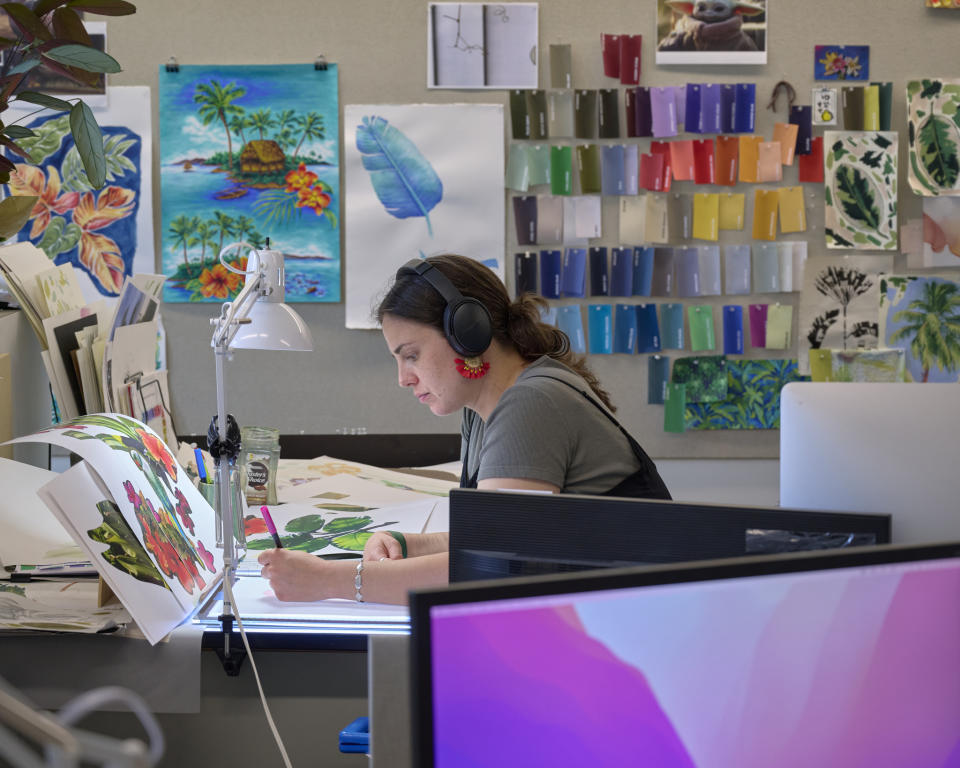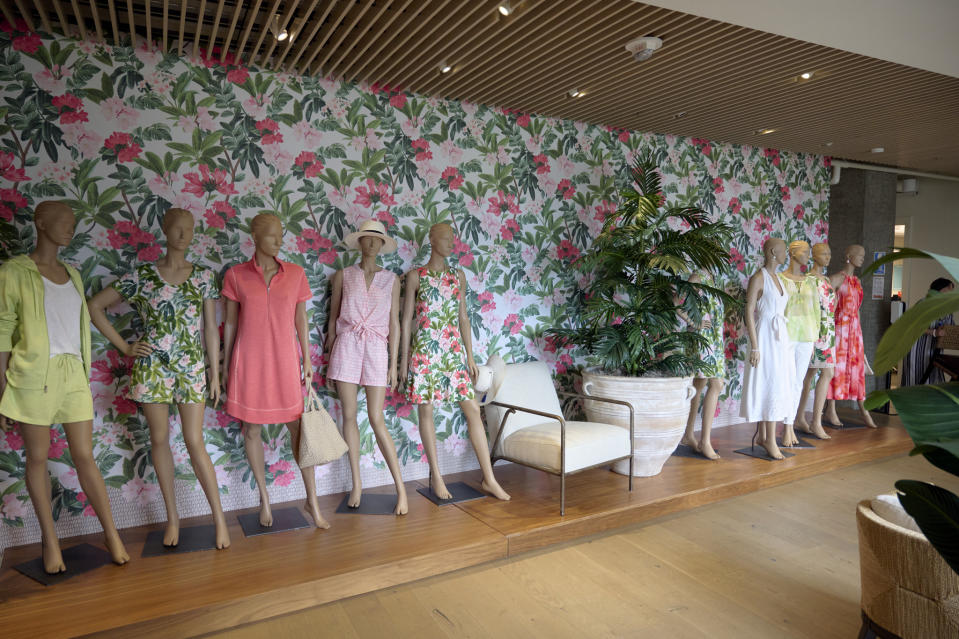Bradley O’Brien Shook Up the Design Process to Strong Results

When Bradley O’Brien joined Tommy Bahama eight years ago to oversee the brand’s design and product development, she had her work cut out for her. She was being tasked with creating a cohesive message for a brand with a wide variety of product categories, and with building the fledgling women’s division.
As the company conducted its search for the new position — executive vice president of design and product development — it sought one person who could oversee its men’s and women’s apparel, swimwear, accessories, footwear, home and licensed products. The search was comprehensive and it took a year before O’Brien was hired.
More from WWD
Despite her extensive background — 10 years at Ralph Lauren, four at Old Navy, six at Lands’ End and four at Sperry Top-Sider — O’Brien said Tommy Bahama was “unlike any other company I had worked for.”
She said that the company was profitable and successful, but it was “design-led. The designers were doing everything but there was no merchant organization.” What that means is that the design staff was working in a bubble, creating a wide array of product without any input from merchandisers who were versed in what would sell.
The assortment was enormous, she said, and “far too big to adopt properly. And it wasn’t a collaborative process. I was used to working with a merchant but no one was even allowed on the design floor” at the Seattle headquarters. “I want to share what we’re doing with everyone so when we present the line, it’s not a surprise.”
In addition, the design team was scattered around the country with women’s in Pasadena, California, men’s in Seattle, and footwear and home in New York.
“We didn’t have a process that made sense,” she said. “I felt we needed to change that.”
And change it she did.
Because many of the team at that time didn’t want to relocate, it allowed O’Brien to bring in some people who she had worked with at her previous jobs including Dawn Brandl in men’s and Julie Snow and Suzanne Bryant in women’s. “We created a built-in community,” she said.
With that community in place, O’Brien set out to execute her core principles— “people, process and product,” all of which needed to be tweaked in order to help Tommy Bahama evolve. “It was a very successful company, but to get to the next level, we had to make changes,” she said.

Meron Menghistab/WWD
One key hire was Craig Reynolds, who came on board as general merchandise manager to give her design team the merchandising eye it was missing. “I advocated to Doug [Wood, chief executive officer] that we needed a general merchandise manager to help us focus and get behind what they think will drive the business.”
Reynolds was hired four years ago and it was then that Tommy Bahama was finally able to focus on growing its women’s business.
“Men’s has always been strong for us,” she said. “It just needed to be updated and made more relevant. Dawn has done a great job with that. But the real opportunity was in women’s.”
Although there were a handful of women’s items that did well for the brand, they were few and far between. So the team focused on surrounding those with foundational pieces, bottoms and dresses to expand the assortment and attract the female customer.
Although women were shopping at Tommy Bahama, it was nearly always for the men in their lives. “She’s in the store,” O’Brien said, “but the biggest enticement is how to get her to shop for herself.”
This new, expanded assortment, which included colorful swimwear, coverups that double as dresses, and soft, comfortable casualwear, has helped the women’s division grow to around one-third of the company’s overall sales today.
As a result of the success, “we now have the opportunity to add more fashion,” O’Brien said.

Meron Menghistab/WWD
One of the biggest franchises for the company is IslandZone, a performance-skewed collection that started in men’s and has now found a niche in women’s as well. O’Brien described it as a label that brings technical fabrics into sportswear silhouettes. “When Dawn started it, she felt really strongly about performance product. At the time, we had casualwear and swimwear, but no athleisure or athletic product.” The first piece was a performance polo and it branched out from there.
“Once we saw it was working, we co-opted it for her as well,” O’Brien said. It’s now offered in everything from dresses and skorts to polos for women and shorts, camp shirts, half-zips, polos and button-downs for guys.
Another success for the company has been Island Soft, a collection of comfortable loungewear-inspired clothes such as sophisticated sweatpants and cardigans that are not only “super cozy,” but allow the brand to create a four-season business for women.
“When I started, we had sweaters and jackets for men but all the women’s dresses were sleeveless,” she said. “We realized we needed to address that so we launched Island Soft and we saw our business turn around in the fall.”

Courtesy of Tommy Bahama
Women’s swimwear has become a successful business, as have the coverups to complement it. “She doesn’t know if it’s a coverup or a dress, she just knows it’s stylish,” O’Brien said.
Another growth opportunity is the resort separates that offer familiar silhouettes in updated fabrics that a woman can wear all day.
In the flagship men’s division, the brand was built on the strength of its silk camp shirts, but this franchise has now been expanded into a variety of fabrics and patterns including linen, silk/cotton blends, rayon and even a perforated model.
In bottoms, it’s the Boracay pant that remains the best-seller for men, and it, too, has now begun being produced for women. The pant, which is available in 15 colors, is also offered in a short.
Other key items for men include the technical golf short, the Chip Shot, in a variety of colors and patterns that can be worn on or off the course. Ditto for the On Par, a line of shorts under the IslandZone category. A long pant version will be introduced for fall.
All told, some 30 percent of the business is now in performance sportswear, up from less than 5 percent in 2019. And sustainability is also a big push for the brand with some 60 percent of the men’s product now using sustainable fibers.
In all the products for both genders, Tommy Bahama always makes sure to include a “sprinkle of sand,” or little surprise details inside each garment intended to evoke a smile and create some “hangar appeal,” she said. These include grosgrain taping, special linings or even a different button thread color.
Looking ahead, O’Brien said the plan is to continue to innovate in fabrics and silhouette for both men and women and enhance the digital business to attract a new customer.
“We are 30 years young,” she said, “but we’re still in our infancy. We have a lot of runway ahead of us for the next 30 years.”
Sign up for WWD's Newsletter. For the latest news, follow us on Twitter, Facebook, and Instagram.

